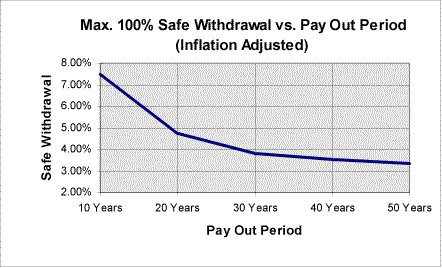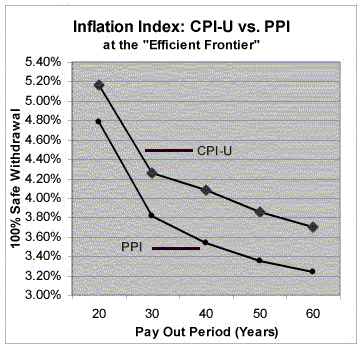Midpack
Give me a museum and I'll fill it. (Picasso) Give me a forum ...
We all know the often referenced 4% SWR is based on retiring at age 65 with a 25-30 year retirement.
And I've heard it said here and elsewhere that 3% is a good rule of thumb for a never ending SWR (for early retirees), and I agree. But just for fun I plugged numbers in FIRECALC with a wide range of retirement durations (how many years in retirement). Only used the first tab, didn't play with Soc Sec, pensions or other income and left it on the default portfolio, etc. Used 100% or 0 cycles failed as the tipping point (yes, we know there's no such thing as 100% success in this area). FWIW...
Don't know or care why the inflection at 55 years...all just for the gee whiz file.
And I've heard it said here and elsewhere that 3% is a good rule of thumb for a never ending SWR (for early retirees), and I agree. But just for fun I plugged numbers in FIRECALC with a wide range of retirement durations (how many years in retirement). Only used the first tab, didn't play with Soc Sec, pensions or other income and left it on the default portfolio, etc. Used 100% or 0 cycles failed as the tipping point (yes, we know there's no such thing as 100% success in this area). FWIW...
| Years Retired | 100% WR | |
| 20 | 4.39% | |
| 25 | 3.89% | |
| 30 | 3.57% | |
| 35 | 3.43% | |
| 40 | 3.32% | |
| 45 | 3.21% | |
| 50 | 3.21% | |
| 55 | 3.36% | |
| 60 | 3.32% |
Don't know or care why the inflection at 55 years...all just for the gee whiz file.


